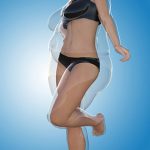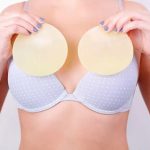What is liposculpture?
Liposculpture is a surgical procedure that is used to give you more muscle tone and shapeliness. It treats little pockets of fat, unlike liposuction which covers larger areas.
Instead of just removing fat, liposculpture also moves it around it for a desired shape. It can be particularly useful in areas that don’t respond to diet and exercise.
Liposculpture works best if you have good skin elasticity, which is generally true for those who are younger, have darker skin tones, don’t smoke, and don’t have much sun damage.
The ideal candidate is close to their ideal weight and has a BMI under 30. It may not work well if you have weakened muscles or loose skin from age or pregnancy.
A board-certified plastic surgeon can tell you whether you’re a good candidate for the procedure.
Why is Iran ideal for liposculpture?
Generally speaking, plastic surgery practice in Iran has gained a lot of ground in recent years. The high demand for cosmetic treatments among Iranian people is a key factor for the great advancement of cosmetic surgery in the country. Low cost and high efficiency are the two main characteristics of plastic surgeries in Iran. Liposculpture is one of the cosmetic treatments that has become very popular over the last years. Iranian plastic surgeons are highly qualified and experienced in liposuction and liposculpture procedures, making use of the cutting-edge technologies to give patients the most desirable appearance.
Apart from low cost and skilled doctors, well-equipped and well-staffed private hospitals and clinics in major Iranian cities must be key to your decision for a liposculpture in Iran. SinoheMedTour hospitals and clinics are among the best in the country, offering the highest quality services to domestic and international patients. Friendly and caring nurses, and English and Arabic-speaking staff are all here to cater to your needs and expectations.
Types of liposculpture
Liposculpture generally takes between two and four hours. You will receive local anesthesia and may receive oral sedation. If the area is larger, you’ll receive general anesthesia or intravenous sedation.
After the surgery is complete, you might stay at the treatment center overnight. Usually only one treatment is needed to achieve the results you desire.
There are three techniques for tumescent liposculpture:
- Power-assisted liposculpture (PAL) uses a vibrating tool to help break down fat faster and remove it more easily.
- Ultrasound-assisted liposculpture (UAL) melts fat with ultrasonic energy through a handpiece. This makes it easier to remove large amounts of fat, but takes longer.
- Laser-assisted liposculpture melts fat through low-energy waves. This procedure also takes longer.
The type of technique that is best for you will depend on a number of factors, including the area being treated and the amount of fat to be removed. Your doctor will tell you which technique is best during a consultation.
 What parts of the body does liposculpture treat?
What parts of the body does liposculpture treat?
Liposculpture targets areas of your body that diet and exercise haven’t improved. It can help to reduce or reshape your:
- Arms.
- Belly.
- Breasts.
- Buttocks.
- Chin.
- Love handles.
- Neck.
- Upper thighs.
Who’s a good candidate for liposculpture?
You’re a good candidate for liposculpture if you:
- Are close to your ideal weight.
- Are in good health.
- Have tighter, more elastic skin.
- Want to sculpt smaller areas of your body.
Who isn’t a good candidate for liposculpture?
You may not be a good candidate for liposculpture if:
- You’re above your ideal weight.
- You smoke and can’t quit before the procedure.
- You have sagging, loose skin.
- Your weight fluctuates frequently.
- You have a medical condition making it unsafe.
What is the difference between liposculpture vs. liposuction?
There are a few differences between the two procedures:
- Treatment area: Liposculpture adds definition to smaller areas of your body. Liposuction removes larger amounts of fat.
- Anesthesia: Liposculpture typically uses local anesthesia, while liposuction sometimes uses general anesthesia.
- Recovery: Liposculpture tends to have a quicker recovery than liposuction.
What is the difference between liposculpture vs. Lipo 360?
Although there isn’t an official definition of Lipo 360, the term refers to liposuction that treats your front, sides and back, like the 360 degrees of a circle. Typically, this involves your stomach, waist, love handles and back. Plastic surgeons use various liposuction methods to remove excess fat and create a smoother, leaner appearance.
Procedure Details
How do I prepare for liposculpture?
Your plastic surgeon will give you specific instructions on preparing for your procedure. For example, two weeks before surgery, you should stop:
- Drinking alcohol.
- Using aspirin, ibuprofen or similar medications that can increase your risk of bleeding.
- Using some herbal supplements.
- Smoking.
What happens before liposculpture?
Before liposculpture, you typically receive local anesthesia. You’re awake during the procedure but shouldn’t feel any pain or discomfort.
What happens during liposculpture?
Liposculpture takes about two to four hours. The exact time depends on how many areas you need treated.
Plastic surgeons use a slender suction tube called a cannula. During liposculpture, your surgeon:
- Injects a solution with local anesthetic and epinephrine into the fat.
- Makes a small incision in your skin.
- Inserts the cannula through the incision to suction out the fat.
If you’re having liposculpture fat transfer, your plastic surgeon will purify the removed fat and insert it into your desired area.
What happens after liposculpture?
After liposculpture, your plastic surgeon may suggest walking to reduce the risk of blood clots in your legs or arms. You’ll wear a compression garment for up to six weeks to reduce contour irregularities, pain and swelling. A compression garment also reduces the risk of fluid forming under your skin (seroma).
Risks / Benefits
What are the benefits of liposculpture?
Liposculpture targets stubborn areas of fat that remain even with exercise and diet. You achieve a more muscular, leaner look.
What are the complications of liposculpture?
Seeing a plastic surgeon who has experience performing liposculpture greatly reduces risks. Still, liposculpture complications are possible. Complications may include:
- Bleeding.
- Blood clots.
- Fluid buildup under your skin.
- Contour irregularities.
- Hard lumps under your skin (nodular fibrosis).
- Infection.
- Numbness.
- Scarring.
- Skin burns.
- Skin color changes (hyperpigmentation).
Speak to your surgeon for a full list of possible complications.
When will I see results with liposculpture?
Results tend to be immediate, but you won’t see the full outcome for up to six months.
What is the recovery time for liposculpture?
Liposculpture recovery can take weeks. It’s common to experience bruising and swelling for several weeks.
When can I go back to work and do other activities?
While it depends on your job and recovery, some people can return to work after a few days to a week. Other individuals may take up to two weeks or longer. You might need to wait up to three to six weeks before doing any strenuous activities depending upon the number and size of areas treated.
























